Nokia Lumia 630 Review
by Brett Howse on July 22, 2014 8:00 AM EST- Posted in
- Smartphones
- Microsoft
- Nokia
- Mobile
- windows phone
Software
The Lumia 630 is the first phone sold with Windows Phone 8.1. Unlike Android, OEMs can’t customize the actual user experience, so I’ll refer you to Anand’s Windows Phone 8.1 review for the whole story here. What OEMs can do though is add to the user experience with apps including custom camera launchers. This is also the first Lumia for sale with the “Cyan” firmware update, so let’s go through some of what this gives you as well as the Lumia apps.
I’ve already alluded to this in the display section, but the Lumia 630 is the first Lumia to offer a brightness slider, and in this case, three levels due to the lack of an ambient light sensor. The three sliders for low, medium, and high brightness have a slightly different scale, so maxing all three will still give a slightly different maximum brightness. It’s a big improvement over the previous choices of low, medium, high, and auto. In the same settings page, you can also adjust the display saturation and hue if it would so please you.
Being a Lumia, you also get access to the large number of Nokia apps which are generally quite good. Nokia also actively courted some developers, giving earlier access to the apps on Nokia devices. With the 630, you have access to all of these (assuming they don’t require 1 GB of memory of course) and some of the highlights I’ll break out below.
When Microsoft acquired Nokia’s smartphone business, the one thing they weren’t able to purchase outright was the HERE branded navigation information. They do retain rights to access it though, and HERE Maps, HERE Transit and HERE Drive+ are available out of the box on the Lumia 630. All are excellent apps with their own slant on how to display the information depending on the usage model. They also offer offline maps which is a bonus for anyone travelling and wanting to avoid roaming data costs but still have access to quality navigation.
Another app from Nokia is App Folder, which does exactly as you’d think. You can add multiple apps and settings to each folder, and then pin them to your home screen. Before Windows Phone 8.1 I used App Folder for quick access to certain settings such as Bluetooth, but now with the action center I find I don’t use it as much. Still, it adds a feature that’s currently missing from the OS and it works great.
The last Nokia app I’ll discuss is a rather unique one called Device Hub. Device Hub simply scans your network for all of the devices on it, and offers suggestions on apps to connect to each device. As an example, if it detects an Xbox One on your network, it will offer up SmartGlass. If it finds a device that you don’t have any installed apps for, it will display a list of options you can use with that device. When it found my A/V Receiver on my LAN, it recommended several DLNA apps. I think it’s a neat app, but my only issue with it is that it’s tucked away under Settings, rather than being an app available in the app list.
SensorCore
New to the platform is an integrated pedometer, and Nokia branded it SensorCore. It’s not the first smartphone to include such a function, but it’s the first Windows Phone with one built in. There is an API to access the pedometer, but for now the only app which can access your step count is the Microsoft Health and Fitness app. As an app, it follows exactly in the tradition of the once Bing branded apps for Windows Phone, and offers a clean, easy to use interface.
Testing the accuracy of a pedometer isn’t easy, unless you want to actually count your steps for a day. I lost count quickly, so instead I’m comparing it to a FitBit One, which is one of the more popular health and fitness wearables.
I’m not sure if the Lumia was under-reporting steps, or if the FitBit over-reports steps, or if it’s a combination of both, but at no time did the two devices ever end up even close to the same count at the end of any day. My feeling is the FitBit easily falls prey to certain movements which skew the numbers high. Driving seems to really send mine to the moon for instance. On a single day, the FitBit accounted for 9470 steps while the Lumia reported only 6500. I was in the car for around an hour that day, so the Lumia number is likely more accurate. Perhaps if I get another device I can test, I can use three, and hopefully two of them will be somewhat close and we can determine a winner.
There have been a number of smartphones come on the market in the last while with a built in pedometer, so it is nice to see the Lumia 630 include one even in a budget device. Whether or not it gets used is up to the individual buyer, but at least they have that option.


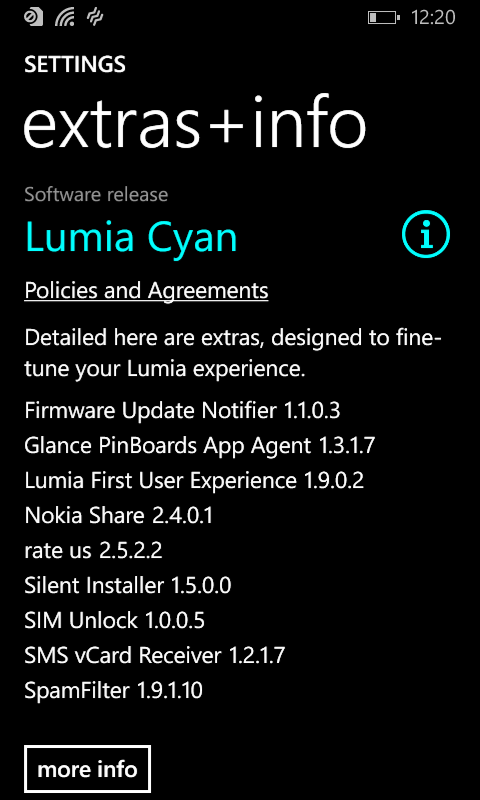
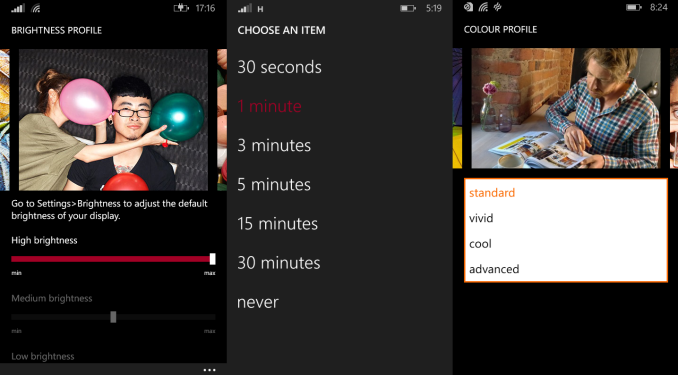
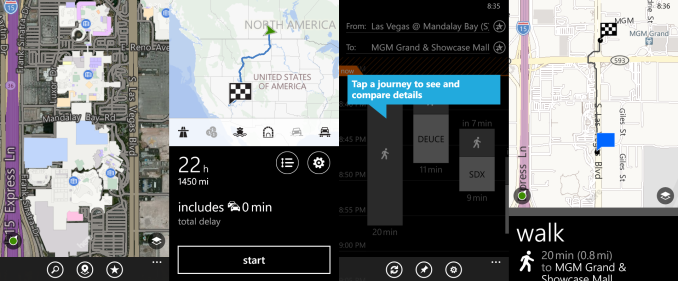
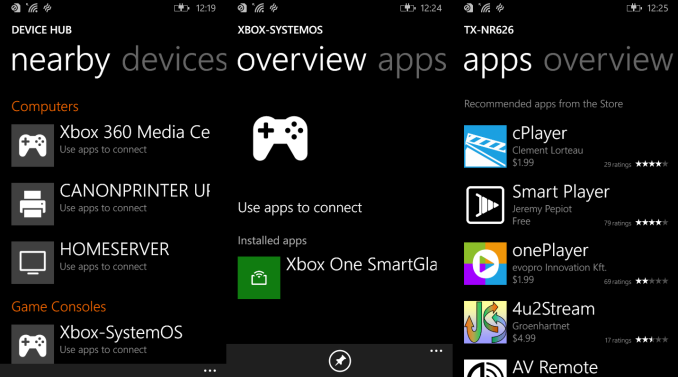
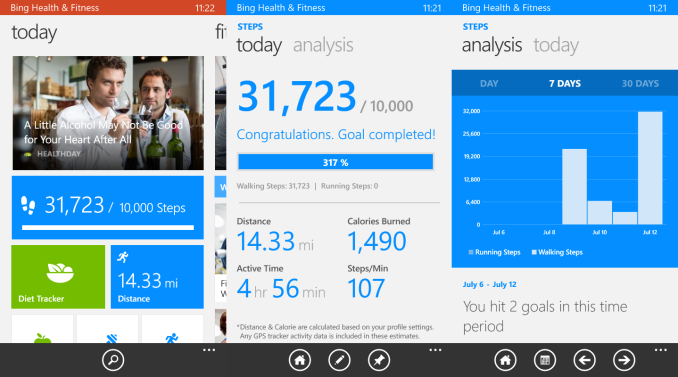








83 Comments
View All Comments
kspirit - Tuesday, July 22, 2014 - link
Incredibly detailed and excellent as usual. Thanks for all the info. I'm glad you clarified why the 930 doesn't have Glance. It confused me, because I thought it was something MS was killing off with WP8.1. Good to know that's not the case.kspirit - Tuesday, July 22, 2014 - link
Another thing I'd like to add is that the 630's display is not "real" ClearBlack. I have seen and owned devices with those, and my father has a 630, and this is most certainly NOT a CBD. It's marketed as such but there is no polarizer.DanNeely - Tuesday, July 22, 2014 - link
"But again the storage of only 8 GB is no problem at all due to the included microSD card being able to add another 128 GB if needed, and Windows Phone 8.1 supports SD cards better than any other mobile OS."Having ran into one major performance problem with using the SD slot on my WP8/8.1 phone, I don't know how true this is in general. Earlier this year I bought a 520 to play around with WP8 and to use as a music player when the risk of breaking it was high enough that I didn't want anything expensive.
My music collection is currently ~60GB/11,000 tracks so I figured that with a 64GB uSD card (class 10) I'd be able to load everything on the sdcard and be good to go. Unfortunately I found that wasn't the case. I often shuffle over my entire music collection instead of drilling down to a specific artist/album. This turned out to be a major problem on my 520.
With the original WP8.0 install attempting to do so froze the phone completely for between 5 and 15 minutes before returning to normal operation mode (at this point everything worked perfectly unless I restarted the phone or changed to a short playlist and then tried to go back to the long one). This problem affected XBox Music, Nokia Music and a few free players I found so it appears to be OS related. I tried upgrading to the developer preview build of WP8.1. This fixed the total phone lockup, but gave a new problem. With the giant playlist there is an ~30s delay between pressing next/previous song and the song being played changing.
With both OS versions this wasn't a problem with small play lists on the SD card or when playing back from internal flash (limited to shorter play lists due to lack of space).
I don't know if this is a problem with the SD implementation in particular, I'm using a class10 card so my card itself shouldn't be the problem, or due to the total size of the playlist swamping the CPU somewhere. I haven't tried filling the card up most of the way with images or video to see how well those apps behave; but this has left me rather skeptical of WP8's ability to effectively use a large SD card to replace internal storage.
silverblue - Tuesday, July 22, 2014 - link
I'm not sure but it may be scanning all your music upon starting the app.DanNeely - Tuesday, July 22, 2014 - link
I don't think so. The app launches as quickly as anything else on the phone does, and WP8 refuses to identify music/etc unless synced using an official app (vs just copied via explorer); and lists everything in the various category based lists (artist/genre/etc). The genre/etc based lists aren't possible without a full index already existing since (unlike artist) they can't be inferred from the file system.In 8.0, it was clearly doing some sort of pre-processing step before starting playback (but completely freezing the phone to the point of even hardware buttons being non-responsive is totally unacceptable); 8.1 doesn't do that, but has a major runtime performance problem as a result.
Kit Y - Tuesday, July 22, 2014 - link
DanNeely is definitely right on this issue, Windows Phone 8.1 removed the on board music and videos to Xbox Music/Video that is separated from the core platform to allow more timely updates to the music player.However, the current music player do suffer from a lot of bugs and slowdown as reported on r/WindowsPhone quite often and major compliant of many uses.
If I had the choice to make decision to balance cost and the features, I would forgo 4GBs of on board storage in exchange of ambient light sensor and 1GB of RAM, GG3 for Glance Screen and perhaps rename it to 530 as it seems to be a lot more appropriate given it's limitations and the similar launch price of 520 which we should see it to be drop to under $100 in many markets.
DanNeely - Tuesday, July 22, 2014 - link
I haven't tried any 3rd party players with 8.1; do you know if the architectural changes provide any scope for 3rd party players to preform better than Microsoft's?althaz - Tuesday, July 22, 2014 - link
The music app is currently being updated pretty regularly and is a LOT better today than it was a month ago.That said, there's plenty of scope for a developer to make a much faster app - I'm working on one at the moment. My plan is to make something pretty limited, but I would personally prefer a very basic app that's fast over one that is fully featured but slower.
skiboysteve - Tuesday, July 22, 2014 - link
the latest version of xbox music on WP8.1 resolves this exact issue. it now no longer scans for entire folders for music file changes every start up... it must use some indexing thing now. It also does scanning and updating in background if you're on wifi and plugged inAlexvrb - Tuesday, July 22, 2014 - link
Yeah they've been making some improvements on the latest updates. Overall the memory card support in WP 8.1 is great.As far as "Class 10" goes... it's almost a meaningless label. Even having a UHS-I rated card doesn't really tell you much. Unless you have read/write and IOPs figures for the memory card in question, it might as well be labeled "random flash card that I hope doesn't blow". I have an ADATA UHS-I microSD card that is rated at 1400/100 IOPs random read/write. Most card manufacturers don't even release those specs because they are so bad.
I really hope UHS-II picks up steam and they start releasing mSD variants and devices that support it. I've seen some UHS-II SD cards with IOPs twice as high as my card or better.